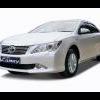Search the Community
Showing results for tags 'about'.
-
Smoking for decades. Having three serious attempts quitting eventually ....Failed!!!!!!!! Can Bros here share , what is your experience, and the most efficiency ways quitting this bad habit. Alternatively, bros just begin smoking, also share what leads you to take up this bad habit? No flaming please..........
-
Anyone has done gearbox overhaul or repair before ? (fil car) due to sound coming out from car, workshop says it is gearbox spoilt, and recommend car to be sent to gearbox overhaul specialist. any workshop to recommend ? what is the estimate price ? Thanks !!
-
For those whom like to read and understand more about whats actually the purpose of springs and shocks on your car and what can or cannot be done to it. Springs Springs are primarily responsible for keeping the tire in contact with the road surface over bumps and dips. In the realm of physics, springs are noted as being efficient machines for storing mechanical energy. When a spring is compressed, the energy required to perform the compression is stored. When the compression force is removed, the spring returns to its original shape. No additional energy input is required. A spring can also be stretched (to a point), and it will return to its original shape. All this depends on the use of effective materials of course. What does a spring do? In a car, compression of the suspension spring is caused when the wheel travels across the front side of a raised bump. A portion of the energy used to cause forward motion of the vehicle is redirected causing the wheel to travel up, which compresses the spring. The spring stores the vertical energy, and as the wheel travels down the backside of the bump, the energy stored in the spring pushes the wheel back down. For safety and handling, this has the significant benefit of keeping the tire in contact with the road surface as the tire travels over a bump. A similar process occurs for dips, except that the spring elongates rather than compresses to start with. Without springs, the wheels would transfer the redirection of the vertical energy into the vehicle chassis and cause the vehicle to bounce off the bumps. This would both be annoyingly uncomfortable to the passengers (a concern to street car manufacturers), and the driver would momentarily lose some or all of the ability to steer, accelerate or brake as traction from the tires would be lost (a safety concern for all, and a maximum performance concern for racing). With springs, the vehicle body can maintain a relatively linear path (providing comfort for the passengers), while the wheel travels up and down over the bumps (allowing for continuous safe vehicle control, and continued traction for maximum racing performance). Therefore, the purpose of the spring in an automobile is to isolate the wheel assembly from the body, and allow the tire to maintain contact with the road over surface imperfections. Spring Stiffness Relative to its shock absorbing function, the spring must be stiff enough to prevent full compression or elongation in large bumps and potholes. However, it must also be soft enough maintain good contact with the road. The softer the spring the better the road contact over bumpy surfaces. However, the stiffer the spring, the better the resistance to bottoming out on large bumps. Somewhere between these extremes is a range of good spring rates (stiffness) to work for the expected environment. Wheel Travel & Body Roll In order to handle bumps and dips, the entire wheel assembly is designed to have a certain amount of vertical travel length from full extension to compression. The rougher the road, the more wheel travel is needed, and the longer the overall spring length needs to be. Factory passenger cars are designed to function well over a broad range of conditions, and the suspension system in particular must be prepared to compensate for potholes, freeway expansion joints, rutted gravel roads, and other less than ideal road surfaces. Therefore, a street car is designed with quite a bit of suspension travel length (think of how far you have to jack up a car's body to get the wheel off the ground--that's about half the wheel travel)). In a high performance sports car (i.e. of the Porsche, Ferrari, Viper, and NSX type), manufacturers assume a more limited range of road surfaces, and design in less wheel travel by a of couple inches. In the typical sports car or sports sedan of the Mustang, Camaro, Eclipse, Integra, and BMW 3 types, the suspension is a little better than the general sedan, but it's really not a great deal different. In racing, we can assume a certain degree of ideal conditions, or at least more ideal than public roads. In a stock street car, even notoriously "bumpy" race courses feel glass smooth compared to most public roads. In these conditions, the purpose of the spring can be focused to maintain maximum and consistent contact of the tire with the relatively much smoother road surface. Under these conditions, very little wheel assembly travel is required. The spring can be optimized for smaller wheel travel conditions. For example, a CART or Formula 1 race car driven on smooth courses may only have 1/4 to 1/2" of total suspension travel! How does wheel travel impact handling? Well, just from the CART example given above, we might assume that shorter wheel travel is better. And, of course, it is. Though the wheel assembly travels up and down, it does not do so on a linear path. The wheel assembly is at some point fixed, and the wheel assembly actually travels in an arc. Whether the body stays put, and the wheel travels (through bumps), or the wheel stays put and the body travels (body roll), this has impact on the camber angle of the wheel which changes the tire contact patch shape. Therefore, for racing conditions, limiting the wheel travel distance is a desirable thing. For street cars, the use of lowering springs (shorter and stiffer) is one method to reduce wheel travel. In extreme cases, it will also be necessary to use shorter shocks. Roll Stiffness So far we have used bumps in the road to illustrate how springs behave. Springs are also acted upon by the forces of acceleration, braking, and cornering. The momentum of the vehicle body in cornering, braking, and acceleration transfers into the springs causing compression and elongation. This is an easy to see effect of weight transfer as it results in visible body roll -- both the side-to-side roll we're mostly familiar with during cornering, but also front-to-back roll -- particularly the "nose dive" under hard braking. Body roll by itself is not necessarily bad. If the four tires remain flat on the road surface with balanced downforce, who cares whether the car body is parallel to the road or not (aerodynamics aside). What body roll does though is change the angles of the suspension components to the wheel assembly (which we call suspension geometry). This is pretty much the same thing as we discussed above with wheel travel, except this is from the opposite perspective. With the wheel on the fixed plane of a smooth road, the body now travels, and causes the wheel assembly to travel in the arc we described. This changes the camber and tire contact patch particularly of those tires which are unloaded and the suspension elongates. Aside from bump absorption, the spring also contributes to the roll stiffness of the car--the ability to resist dive under braking, squat during acceleration, and body roll during corning. The anti-roll bars also play a roll in this, and the two combined create the total roll stiffness of the car. Stiffer springs will resist body roll more, reduce change in the suspension geometry, and maintain a more consistent tire patch size. Note: many people are under the misconception that body roll causes weight transfer. This is not true. See the weight transfer article for details about this. Spring Stiffness for Racing and Street Use The spring's roll resistance characteristics helps to resist the forces during dynamic changes, and make the car more stable during the transition. This implies a stiffer spring is needed to minimize the compression and elongation, and therefore minimize the change to the suspension geometry. However, even purpose-built race cars cannot simply use the stiffest spring available. If we return to the case of having no springs at all (the ultimate in stiffness), even a "smooth" race track would be violently bumpy without some suspension dampening. At some point the spring becomes too stiff for the road surface, and the vehicle will lose traction as it bounces over surface imperfections. The race technician and driver have to find the most effective balance between being soft enough to allow the tire to stay in contact with the road surface over bumps, and being firm enough to control suspension geometry and keep the tire as flat as possible on the road surface. A driving enthusiast's car which does double duty on the street and the track has a larger window to find compromise in than does a race car. Putting full race springs on your street car may seem the macho thing to do, and though your car should be faster on the track, it will make your life miserable on the street. In fact, it is quite likely to cause damage to other suspension components when you come across that surprise pothole. Today, after-market springs offer features that not too long ago would have been found only on race cars. The research done in sports car class racing has resulted in several manufacturers producing high performance progressive rate springs for virtually all sport enthusiast cars that allow an acceptable comfort level on the street yet significantly increase handling performance over the stock springs. Most factory stock springs have a constant or nearly constant factor of stiffness called the spring rate. As the spring is compressed or elongated, the force required to change the spring's length stays the same. The spring rate is linear as the spring goes from full elongation to full compression. This provides greater comfort across minor and major bumps, but does little to minimize body roll under hard cornering. Progressive rate springs have a softer spring rate during some initial portion of compression or elongation, but then get progressively stiffer as continued force is applied. This is typically accomplished by changing the shape of the spring. This ability to start soft and get firmer with higher compression allows the spring to accommodate typical street bumps with satisfactory comfort. On the track under high braking or cornering forces, the spring's stiffer region comes into effect to reduce the body roll compared to the stock spring. Compared to a full race spring, there is a little more body roll before the spring takes a firm set, but that's the compromise of a dual purpose car. Most after-market progressive-rate springs start out about 15% firmer than the stock part, and get stiffer from there. Though they offer acceptable bump absorption, they do give the vehicle a noticeably rougher ride, especially with larger bumps where the spring becomes stiffer. However, given the success of these springs, the comfort for performance trade off is considered well worth it by sports car enthusiasts. In selecting an after-market spring set, you should know how much stiffer than stock it is, whether it is progressive or linear, and how much it will change the car's ride height. If you're concerned about losing too much ride comfort, you should ride in another car as closely prepared to yours as possible. Some people stiffen their suspensions for periodic racing only to discover they really don't care for it the remaining 97% of their driving time. You should also know what other suspension changes you're going to make to the car including wheel and tire sizes, and talk with a technician experienced with your car type. Certain combinations of springs, shocks and tire sidewall sizes will function better than others. A mechanic from a specialist shop or race team may offer some advice learned from experimentation and testing. Using Springs to Lower the Car One other thing related to spring selection is that of vehicle ride height. On the street, the variety of road surfaces, speed bumps, drainage channels, and steep driveways requires the car's lowest point have a certain practical height above the road to avoid damaging the car. In racing, ride height has significant impact on the vehicle's center of gravity ("CG") which is one of the major influences in a car's weight transfer characteristics. Ideally, the CG should be as close to the ground as possible, and race cars will be lowered as much as allowed by the rules. Open-wheel formula cars are lowered as much as possible without bottoming out while racing which often ends up being 1/2" or less on very smooth tracks. The most straightforward way to lower the CG is to lower the car, and the most direct way to do that in a street car is with shorter springs. Most street cars can be lowered somewhat from their factory setting, but there are several practical limitations in the design of the suspension system. A realistic compromise needs to be made that considers the clearance needs for the street, and the suspension system of the car. Extremely low cars ("slammed" in today's vernacular) may look good (or at least look like the racing sedans they seek to imitate), and if done right will handle better on the track, but there are some limitations on the street. Springs which are too short may cause interference problems with other suspension components such as the shocks. Additionally, the suspension geometry (the connection points, and lengths of it parts) are designed with a certain spring length in mind to keep the wheels in proper alignment. A severely lowered car that does not also alter the suspension will cause the wheels to have excessive camber for sure, and will likely also adversely affect the castor and toe. You might think it looks great, but this will severely reduce the handling performance of the car. You should consult someone experienced with your car type before just buying the spring which seems to lower your car the most. Such a spring may also require a specific matching shock or other suspension changes to actually improve the handling performance. Speaking of shocks, it is generally necessary to buy stiffer shocks at the same time you change the springs. Springs alone will lower the CG, and will reduce body roll, but neither is the primary function of the spring. For road imperfections, shocks work in conjunction with the spring, and are designed with each other's ratings in mind. Going over bumps, a stiff spring may resist the first compression well, but without sufficient shock capacity, the car will bounce more than it should afterwards which ultimately reduces the car's handling performance. Also, stiffer springs will prematurely fatigue stock shocks. They'll last a while, but will eventually get weaker and decrease the handling performance. If you can only afford shocks or springs, either keep saving to get both, or start with the shocks. Performance shocks alone which provide firmer bump and rebound control, and greater control over weight transfer rate, will improve handing performance more than stiffer springs alone will. Another Option: Coil-Over Springs There is increasing availability of coil-over suspension setups for street cars. The coil-over is a combined assembly of the shock and spring where the spring rests in a height-adjustable base. Coil-over setups were designed to optimize racing performance, and so several characteristics of coil-overs seem to make them the ultimate choice in suspension modifications. First, coil-overs allow the car to be lowered more than conventional shock and progressive rate spring upgrades. This of course is a good thing for weight transfer control, but as we mentioned earlier, can cause real comfort and damage-potential problems for a street car. Secondly, the spring rates are usually much stiffer than even progressive rate springs, and they're usually linear. On the race track, there's no need for a progressive spring rate, and coil-overs with their racing purpose, aren't intended to use them. This also allows the spring to be shorter which is where the greater lowering potential come from. The main purpose and advantage of the coil-over design is to allow independent ride height adjustability of each corner of the car. This ride height adjustability allows manipulation of the center of gravity of the car. In particular, by manipulating the front to back or side side to side location of the center of gravity, weight transfer can be controlled to influence specific tires on the car. If you can pre-dispose the car to distribute weight transfer a certain way, you can optimize the grip of certain tires and improve the overall speed of the car through corners. Raising the back of the car puts the CG more forward. Raising the front of the car pushes the CG more rearward. The left or right side could also be independently raised or lowered. With these adjustments, you can reduce the amount of grip lost to specific tires during weight transfer. For example on a race track with a high percentage of high-speed right turns, you could set the car up to reduce the weight transfer to outside left tire, and increase the weight that remains on the right rear. Compared to the same car with fixed ride heights, the one with the adjustable coil-overs will be able to increase the overall grip through more even wieght distribution during the dynamic load of the right turns. So, this sounds like an awesome modification to run out and get, right? Well, yes it is -- for racing. Like we say, for the street this is an extreme modification. You may be die hard, and live with the harshness of the ride, but you'll likely have very grumpy passengers. It is possible to minimize the harshness by using softer springs, or even progressive rate springs for that matter. However, those springs will tend to be longer, will not allow the car to be lowered as much negating some of the advantage. Some people will use stiff springs for the track, then swap to softer springs on the street between events. Summary Springs allow the wheel to remain in contact with the road surface over bumps. The bumpier the road surface, the softer the spring needs to be. In a street car, it's not likely you'll be set up to change springs easily, but in selecting an after market spring, you should understand the balance of ride comfort and track performance you want, and identify the spring best suited to that compromise. Lowering the car with shorter springs will also reduce weight transfer, but excessive lowering (beyond the design range of the other suspension components) will cause other problems that will diminish handling performance, and potential create very unsafe conditions if the suspension bottoms out easily. Progressive-rate after-market springs are designed to reduce body roll to maintain better tire contact patch during cornering, and reduce weight transfer while sacrificing only a little ride comfort. A coil-over spring and shock assembly is generally the ultimate set up for racing. The car is lowered significantly, the springs are usually much stiffer for body roll control, and the ride height of each corner of the car is adjustable allowing tuning control over the center of gravity and weight transfer. Coil-overs are an extreme modification for street use, and renders the ride comfort intolerable on the street for most people. For all changes to the spring stiffness, especially coil-overs, be sure to test drive a car that has a setup similar to what you're looking at. Ride stiffness is a definate try before you buy situation to make sure you can live with it the 97% of the time you're not racing. Shocks The primary function of the shock is to dampen the oscillation of the springs after the wheel travels over bumps and dips. If you've read the springs article, you know that the spring's job is to allow the tire to maintain constant contact with the road surface. It is the spring that actually absorbs the shocks of surface roughness. So, contrary to their popular name in the U.S., the purpose of the "shock absorber" is not to absorb the shock of bumps on the road. That is the job of the springs. The purpose of the shock is actually to dampen the oscillation of the springs. Reflecting this function, those outside the U.S. refer to shocks as dampeners. We mentioned that a spring retains energy to allow it to return to its original shape after being compressed or stretched. Unfortunately, a spring will not just return to its original shape and stay there. You've probably witnessed yourself that if you compress or bend a spring it will oscillate back and forth in smaller and smaller increments until finally coming to rest. If you have ever seen an old car bounce endlessly after going over a bump, you have seen what springs will do in a car with ineffective shocks. This is not good for safe control of the vehicle, and it's certainly not any good for effective handling while racing. The shock's primary purpose is to control this oscillation. In a passenger car, the designer has the choice of just how fast the shock dampens the spring. If the dampening is immediate, the car will have better weight transfer rate control, but a harsher ride. If the dampening is a little slower allowing perhaps 2 to 3 oscillations, the ride will feel much smoother. In racing, we want the dampening to be almost immediate. A vehicle's bouncing on the springs creates erratic shifts in the tire contact patches and mechanical downforce on the tires. Both of these conditions reduce the effective grip the tires have. Any bounce in the body of the vehicle must be eliminated quickly to allow full grip to return as fast as possible to the tires. However, like springs, it is possible to have too stiff a shock. First, if the shocks are stiffer than the springs, the springs will be overpowered, and will not actually fulfill their bump absorbing function. Secondly, a shock has a major affect on how quickly weight transfer occurs in the dynamic changes of accelerating, braking, and cornering. The stiffer the shock, the faster the weight transfer occurs. This will help the vehicle have very responsive steering, but the transfer can be too fast for the driver. During cornering in particular, the driver must be able to induce smooth weight transfer and feel the tires reach their maximum grip. If the weight transfer occurs too fast, the driver will not feel the tires approach that peak grip, and will likely overshoot the traction capacity of the tires causing excessive sliding or spins. When modifying your car, starting with the most awesome race hardware you can buy is not likely the appropriate starting point. Full-race shocks are going to be too stiff for the street, and will likely cause the car to bounce off of bumps. Additionally, you'll probably not have the sensitivity to feel the grip level of the tires when cornering at maximum speed. To help with the dual purpose street/track car, and to provide some adjustability for tuning handling performance, there are several after-market shocks that are adjustable. A manual (or even electronic) dial allows selection of several settings which are progressively stiffer. These shocks can be turned to their softest setting (they're still going to be stiffer than stock) for a smooth ride on the street, and their firmest for the track to minimize body roll and increase the steering responsiveness. The adjustability also allows finer tuning of handling performance for a given track. As discussed in the weight transfer and the handling tuning sections, adjustable shocks can be used to help adjust out small amounts of oversteer and understeer. If you can't afford adjustable shocks, don't assume that stiffer is better in a fixed rate shock. Shocks should be selected knowing the springs they will be used with. Too stiff a shock will overpower the spring reducing its effectiveness. If the shock is not adjustable, then matching the shock to the rating of the springs is even more critical. You sould consult a shop experienced in this matching. Talk with a technician familiar with your car, and find out what shocks offer the best performance for you car's degree of modification. The "killer" shock for someone else's car may not be the best one for yours. Summary The shock's purpose is to control the oscillation of the spring's response to bumps and dips. The stiffer the shock, the faster the dampening. The shock also controls the rate of weight transfer. The stiffer the shock is for compression (or "bump" as it is often called), the faster weight transfer occurs which determines how fast the tires will take their "set" in a corner, and the resulting steering responsiveness of the car. It is possible to have too stiff a shock which will overpower the springs, and results in weight transfer being too fast for the driver's experience and sensitivity to feel when maximum tire grip is achieved in a corner (generally resulting in a lot of spins). Shocks need to be selected knowing the ratings of the springs.
-
come... let's talk about NS shall we? for me, the memories were mostly ok... some unforgettable ones were: - unknowingly took up a prone position in a nest of ants during a training exercise... jumped up and tio kan by the sergeant - dozing off during an evening ambush (at Tekong) and waking up suddenly in total darkness seeing nothing (couldn't even see my own hands) - lost the ring of a smoke grenade but luckily able to find it before the sergeant knew about it (avoid at least three extras!) - eating many leftover drumsticks like yao gui while cleaning the cookhouse the camps I've been posted to: - Nee Soon Camp - Tekong - Pasir Laba Camp (terrible memories!) - Mandai Camp - Khatib Camp - Sungei Gedong Camp - Paya Lebar Airbase (good life there!)
-
There are many kind of air filters in the market. 1) The stock(OEM) filter is the norm and I believed that many are using it. 2) The open pod filter (or those carbon fiber type) is more to improve power with a broom-broom thingy (eg. K&N, Simota, etc.). 3) The another drop-in filter is like those similar looking to those OEM filter but with added fixtures (eg. metallic wire mash thingy). I thought of changing my air filter and need opinions.. Which air filter will you choose and why?
-
Hopefully someone can advise here Do i need a licence to distribute or retail sex toys locally? I had google for hours yet to find an answer If needed which government dept should i approach? Thanks
-
My place here just recently changed to automated parking system... previously car owners will paste the season parking on their car... so with this new automated parking system how to tell if you are season parking holder? Thru the IU?
-
Hi all, I understand that people do not normally move house during the 7th month Hungry Ghost Festival. What about Qing Ming Jie? Is it advisable to move house during Qing Ming Jie? Also, anyone here can direct me to an affordable and (more importantly) credible person versed in the Tongshu who could advise me on what's a good time to move house based on my Ba-Zi? Thanks!
-
Hi Gurus, I am looking at getting a Airtrek Turbo. Any current drivers or ex drivers who can give inputs on this ride? Done a search and apparently not much has been discussed. What is the FC that you getting? Heard horror stories about it but all are hearsay. No friends driving one. Pls help. thks
-
im driving a hyundai i30 recently i find out that when i park my car with aircon and engine on after about 15mins i feel that the temperature in my car become higher meaning getting hotter with the same degree set and also my thermometer indicator (not sure what that is call) for the car went up higher too. but once i start to drive cold air start to blow out again and the thermometer went back to normal cause last time i dont think got this issue at all cause i park my car and leave aircon and engine on the aircon still cold after 30 mins or more please advise sorry for the noob question haha
- 27 replies
-
Dear all, Was doing some clearing and realised that after vacuuming for awhile ... the dust bag inside got lots of dust. So when we throw it away, must get it replace. Then I saw this new model that don't use the bag kind but some new technology don't need to replace the dust bag and it cost $498!! So just wanna find out from here who use those type like Osim Mermaid etc .. what are the feedback?
-
Am very delighted when Nan Hua Pri Sch (NHPS) accepted my application as PV for my daughter's enrolment for P1 in 2012. However, me now staying >2km (at CCK)...thus am contemplating very hard on whether to shift house. Have checked the property prices (both HDB and pte) in Clementi area (especially within 1 km of NHPS) and it is quite high...or should I enrol in a decent neighbourhood sch within my resident vicinity and then enrol her for tuition and enrichment classes instead?? At CCK, I am considering South View Pri (within 1km to 2km from where I stay) and Yew Tee Pri (within 1km from where I stay)...however, for both 2008 and 2009, South View Pri has balloting even in Phase 2B for those residing within 1km, while for Yew Tee Pri, balloting was applicable for phase 2C only. Thus far, NHPS only has balloting for phase 2B in 2008. For 2009 and a few years before 2008, there was no balloting in phase 2B. Haiz...really in a dilemma...any advice from gurus here?? Many thks!! Back to top
-
http://gizmodo.com/man-forgets-about-buying-27-of-bitcoin-is-now-worth-a-1454150399 Man Forgets About Buying $27 of Bitcoin, Is Now Worth About $1 Million 1 Four years ago, Oslo-man Christopher Koch's girlfriend scoffed at his purchase of $27-worth of Bitcoin. Chances are she was singing a decidedly different tune last April, when Koch checked back in on his investment and found out it was worth $886,000. And over a cool million today. Back in 2009, Koch was working on a thesis paper about encryption, which introduced him to the relatively unknown world of Bitcoin. On little more than a whim, he decided to throw down $27 for 5,000 Bitcoins because the encryption process fascinated him and because why not. Koch then promptly forgot about the purchase—until Bitcoin started popping up in the news four years later, that is. Remembering his offhand investment, Koch frantically searched for the password to his wallet and was floored to find that, by last April's standards, he was sitting on an $886,000 nest egg. After trading in just one-fifth of his total purchase, he was able to buy himself an apartment in Toyen, one of the wealthiest areas in Oslo. Of course, Bitcoin is also notorious for occasionally erratic fluctuations in value, the most recent example being the seizure of Silk Road earlier in the month, which saw the price fall to $30 before skyrocketing again to $197. By today's standards, though, Koch's $27 investment of 5,000 Bitcoins is worth a total of $1,010,000. Not bad for a broke student with zero investment experience. [NRK via The Guardian]
-
Dear Admin, We can see that there is very high interest in alternative fuel recently, particularly on the use of CNG. There are threads about Hybrid, HHO and latest EURO IV diesel too. We see CNG topics in General car discussion, in performance forum and even in Skoda forum. They are here and there and infact everywhere. I'm of the suggestion to setup a forum specifically for the discussion of alernative fuel. It will facilitate the exchanges of view of alernative fuel than to see them everywhere in MCF. Kindly consider the suggestion. Thank you very much. Regards,
-
From ST Forum: http://www.straitstimes.com/STForum/Online...ory_805936.html Concerns about fast-food delivery staff and their motorcycles Published on Jun 2, 2012 I AM concerned by the reckless riding of fast-food delivery staff, especially when they zip along Housing Board void decks to save time or make the delivery deadline. Last Saturday, I saw a Pizza Hut delivery rider doing just that at Marine Parade. I called the Pizza Hut hotline to complain and the reply I received from the manager was that the fast-food chain would look into the matter and counsel the rider. When I asked for the motorcycle licence number, he replied that he did not have it and explained the difficulties in identifying the rider. To his credit, he identified the rider after several calls, but it would not have been possible had I not persisted. When fast-food companies receive complaints, do they actually discipline the riders and to what extent? Over the weekend, I noticed two riders apparently making a delivery for McDonald's on motorcycles carrying Johor licence plates. At least one rider (see photo) was on a motorbike with only a provisional Malaysian licence. Is this legal? Are foreign vehicles allowed to be used for business purposes? How is insurance managed in the event of an accident? The authorities should review policies and regulate fast-food delivery service by motorcycling staff. Fast-food companies should also do the right thing by conducting safety reminders daily to motorcycle delivery staff, handle complaints seriously and be prepared to discipline staff, including terminating the services of such staff and reporting recalcitrant riders to the police. These companies should also review remuneration for these riders to give them an incentive to ride safely while not affecting their income. Until there is an improvement, I shall not be ordering home delivery; not when there is a chance that someone's safety could be at stake. Adrian Lee
-
bloody hell who is the dept in charge of potholes? LTA? small island cant keep the road in proper order. Saw motorcycle almost buang because of big pothole. have experienced numerous pot holes all over the island. so hard to maintain the road? nb malaysia also less occurence than in sgp. near nuh even better. 3 lanes all filled with leftover cement for months and no one bothers.
-
anyone wants to translate it into English without losing too much of its touching content?
- 47 replies
-
- Short
- Delightful
- (and 4 more)
-
Just a quick check-in with your guys. I went to one of the shops listed on this thread today. The guy quoted me $80 to change my key to a flip key type. He said no need to cut new key, he can transfer the old key over. IS This possible ? Also, he said I needed to bring all my car keys (total I have 2 keys) and re-program all the keys at the same time. Does this make any sense ?
-
Households to see average rise of about 22% in electricity bills from Oct By Channel NewsAsia | Posted: 29 September 2008 1035 hrs SINGAPORE: Higher oil prices have pushed up electricity prices for this quarter by about a fifth. SP Services said on Monday households will see an average increase of 21.46 per cent in electricity bills, when average electricity tariffs go up by 5.38 cents per kilowatt-hour. On average, all SP Services customers will face a 21.89 per cent increase. For the period from October 1 to December 31, tariffs have been pegged to a higher "forward fuel oil price" of S$155.14 per barrel. This price is 38.06 per cent higher than the S$112.35 per barrel in this current quarter. The electricity tariff is reviewed quarterly and adjusted in line with fluctuations in the cost of electricity, and approved by the Energy Market Authority. At a news conference on Monday, the Authority's chief executive Khoo Chin Hean said that the increase is the highest so far this year. So much so for the increase by the gov on the U-Rebate thing...LPPL...as mentioned tariffs have been pegged to a higher "forward fuel oil price" of S$155.14 per barrel." what if the oil price drop during this period, r they going to refund us??? KNN trying to recoup the URebate through forecast oil price, might as well become a fortune teller...
- 171 replies
-
- Households
- average
-
(and 5 more)
Tagged with:
-
Sign taken from Sydney NSW. I think its a lot cheaper in our town.
-
Dear friend. dealer send 2nd car to STA for inspection. Overall Grade is B. The report mentions that (1) engine oil and (2) transmission oil are dirty and need to replace. Dealer promise to change to it before deliver to me. Is there any concern? What shall I pay attention to ?
-
who to complain to about traffic lights ?
-
anyone? on 29 or 30 dec.
-
Hi all, Fish is perceived as a healthy source of protein (Omega). My current maid told me his ex-employer in Hong Kong is a fish lover and wanted fish for every meal if they are eating at home. Do you eat fish everyday? I thought this is a good idea and seriously thinking about buying more fish in the near future. What are the fish that are known for a nice steamed dish? I'm sure there are both cheaper one and the more exotic one. Any lobang for reasonable priced fishes around? Fish guru, please advise. Thank you very much. Regards,














